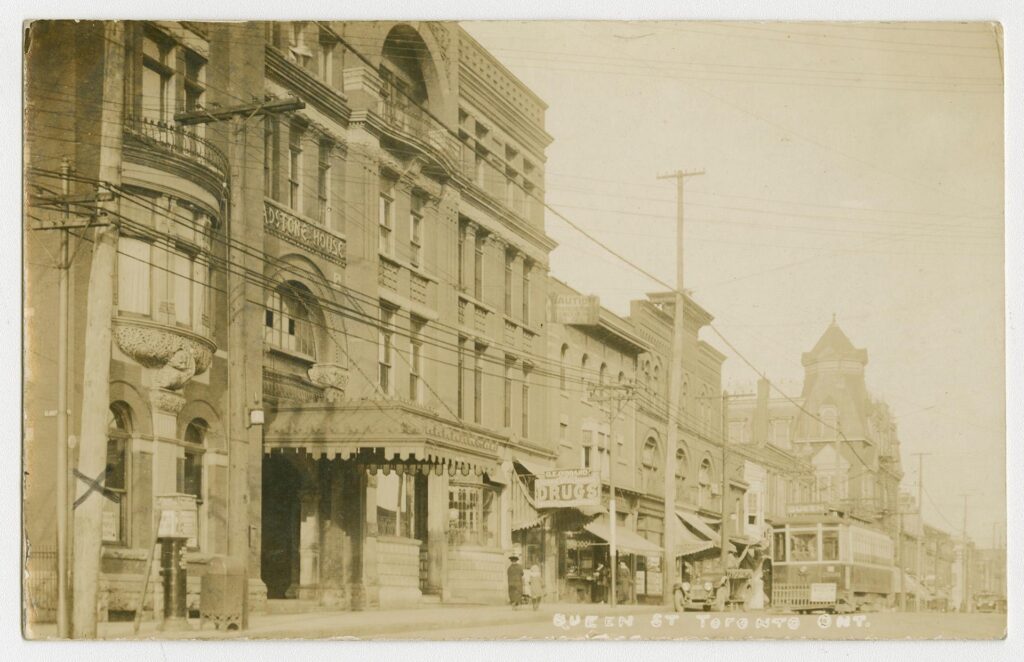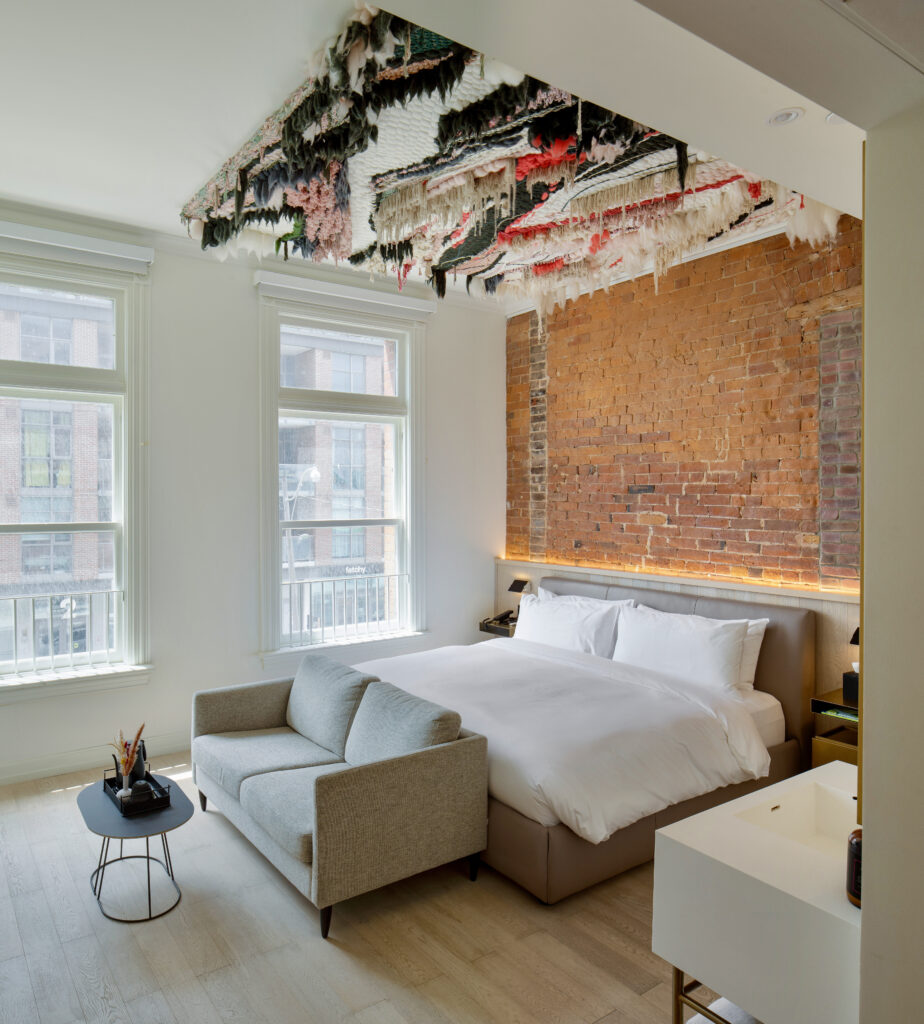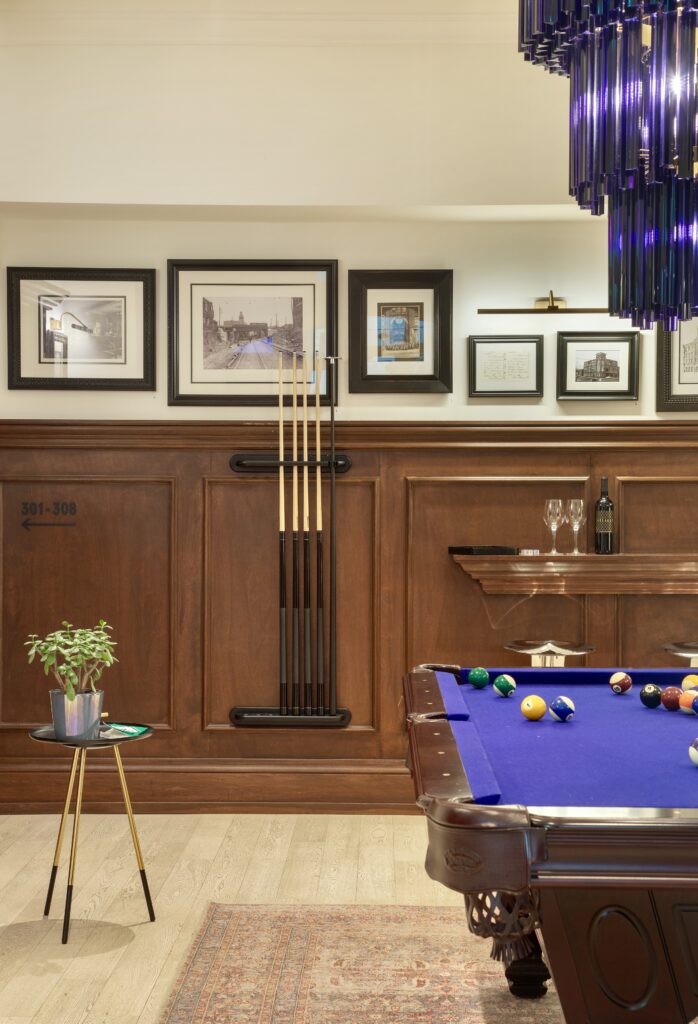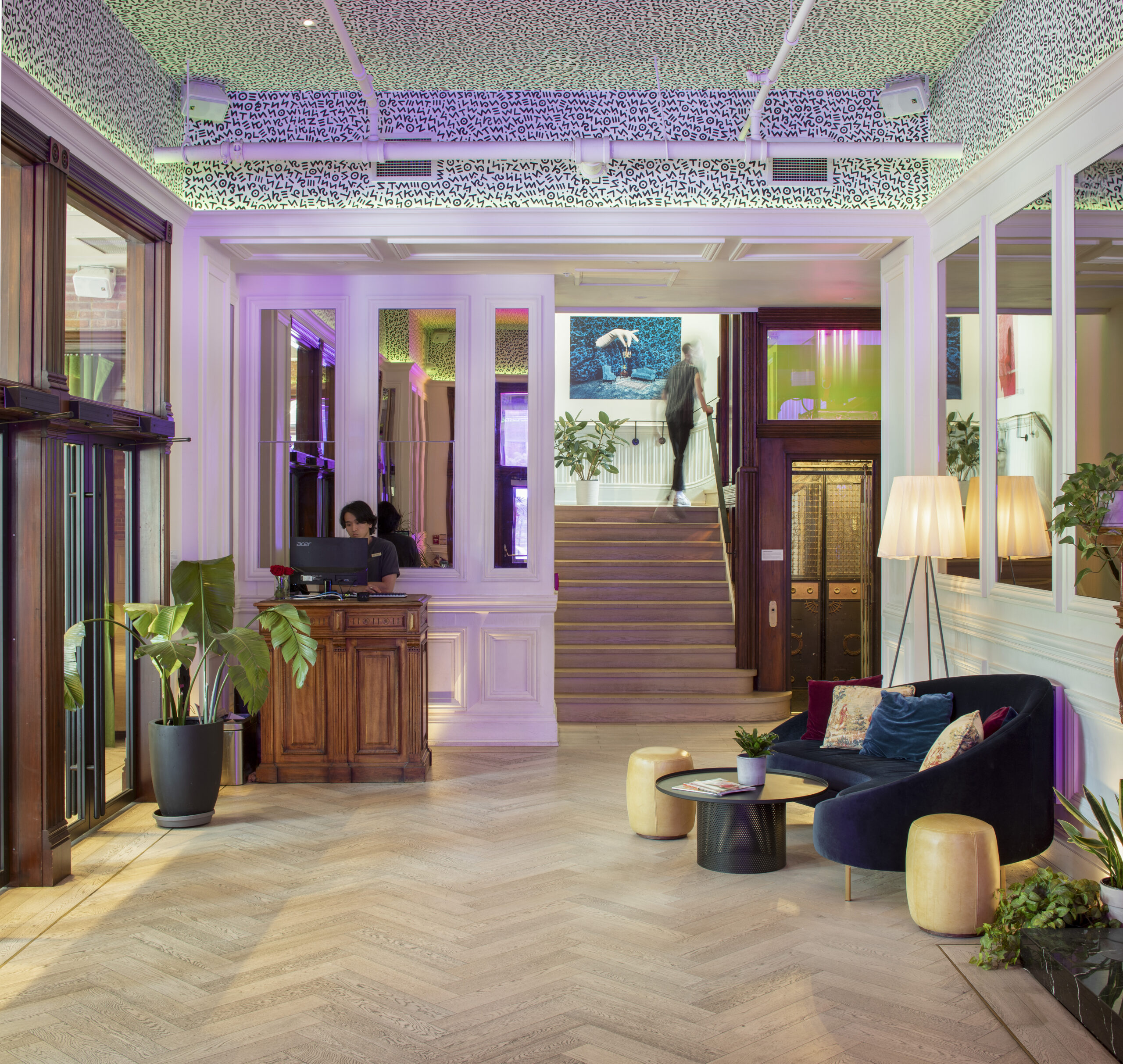Gladstone House Toronto: Where History Lives
Long before the 501 streetcar rumbled down Queen Street West, there was Gladstone House. Built in 1889, the hotel originally served as lodging for travelers arriving at the nearby Parkdale railway station. Its Romanesque Revival architecture and commanding turret were symbols of Victorian ambition, and it quickly became a key stop for performers, businesspeople, and tradesfolk. It is the city’s oldest continuously operating hotel, a fact that comes with both pride and responsibility.
In its early years, the Gladstone wasn’t just a place to sleep. It hosted vaudeville acts, community meetings, and impromptu performances in its lively parlours. The hotel’s signature hand-operated elevator, still intact and restored today, ferried guests through decades of changing city rhythms.

A Thoughtful Redesign That Kept the Soul
When Streetcar Developments and Dream Unlimited took over, the mandate was clear: refresh without erasing. With Elastic Interiors at the helm, the redesign leaned heavily on preservation and storytelling. Original elements like exposed brick, historic moldings, and the hand-crank elevator were restored rather than replaced.
Layered onto this foundation were contemporary textures and tones: soft woods, matte black fixtures, buttery leathers, and warm ambient lighting. The vibe is intimate but open, modern yet unmistakably Gladstone. In the lobby, polychromatic accents nod to the building’s past lives, while clean-lined furniture and curated lighting signal a future-forward vision.
Guest rooms mirror this balance. Archways and wainscoting maintain historical charm, while modern art and streamlined furniture reflect the present moment. Technological updates bring the hotel into the now, without compromising the building’s architectural integrity.

The Third Place: Art, Always
More than just a boutique hotel, the Gladstone continues to serve as a cultural institution. It’s a third place where locals and guests can gather, connect, and exchange ideas. This ethos is most visible on the third floor, which has been transformed into a welcoming lounge and billiards room filled with archival photography and rotating contemporary art.
The “Art, Always” philosophy is everywhere. Over 50 works by local artists were selected to animate the guest rooms and public spaces. Each piece adds a layer of narrative and reflects Toronto’s creative diversity. There’s no sterile minimalism here—this is a hotel that believes in texture, in emotion, in storytelling through space.
From the moment you step into the lobby, you’re invited into something layered and alive. The building feels like it remembers, and it wants to share those memories.

Why Gladstone House Toronto Still Matters
Gladstone’s refresh isn’t just about aesthetics. It’s about values. It shows us how legacy spaces can evolve with grace, preserving culture while making room for what’s next.
It’s a model for cities like Toronto, where history often gives way to the new. Here, design was used not to replace but to reveal and to coax out the richness already embedded in the bones of the building.
The result is a hotel that doesn’t just look good, it feels right.
Learn more about third places in Toronto with Toronto’s Third Places: Where Coffee Meets Community.
